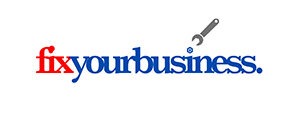Stable, Toxic, or Volatile: Which Kind of Leader Are You?
An element can be labeled one of these based on its reactivity to air, or in other words, how it behaves depending on the environment it is in.
In drawing insight from this elemental fact of nature, there is great utility in seeing the parallel of elements from the periodic table and the similarities in people.
Just as the elements of the periodic table make up all of the things that exist in the world, leaders are the fabric in which organizations exist.
In reverse order, I will explain how these definitions articulate the three types of leaders in the world.
Volatile leaders: Much like elements with high reactivity, volatile leaders are characterized by their dynamic and unpredictable nature. They thrive in change and innovation, bringing energy to their teams. However, if not managed carefully, their intensity can lead to instability.
Toxic leaders: Similar to elements that can be harmful or poisonous, toxic leaders create a detrimental environment. They undermine trust, foster negativity, and hinder growth. Identifying and addressing toxic leadership is crucial for individuals’ well-being and an organization’s overall health.
Stable leaders: Like inert elements, stable leaders are consistent, reliable, and often the backbone of an organization. They provide a calming influence and can maintain equilibrium even in tumultuous times. Their steady approach is crucial in sustaining long-term success and stability within a team.
It is of the utmost importance that you assess which category you as a business owner and the leaders you have driving your organization fall into.
As a result of that assessment, you need to invest in the development of those leaders, building on the things they are good at and improving areas where they are not performing well.
Conclusion:
Understanding the type of leadership at the helm of your organization is not just an exercise in labeling but a crucial step in fostering a healthy workplace culture. Whether stable, toxic, or volatile, each leadership style impacts the organization differently. By acknowledging and addressing the inherent qualities of each leader, organizations can harness their strengths and mitigate their weaknesses, leading to a more resilient and productive environment. Remember, the goal is not to fit everyone into a neat box but to understand the dynamics at play and how they can be balanced and improved for the success of all involved.
-Jesse Brown, Founder/CEO

